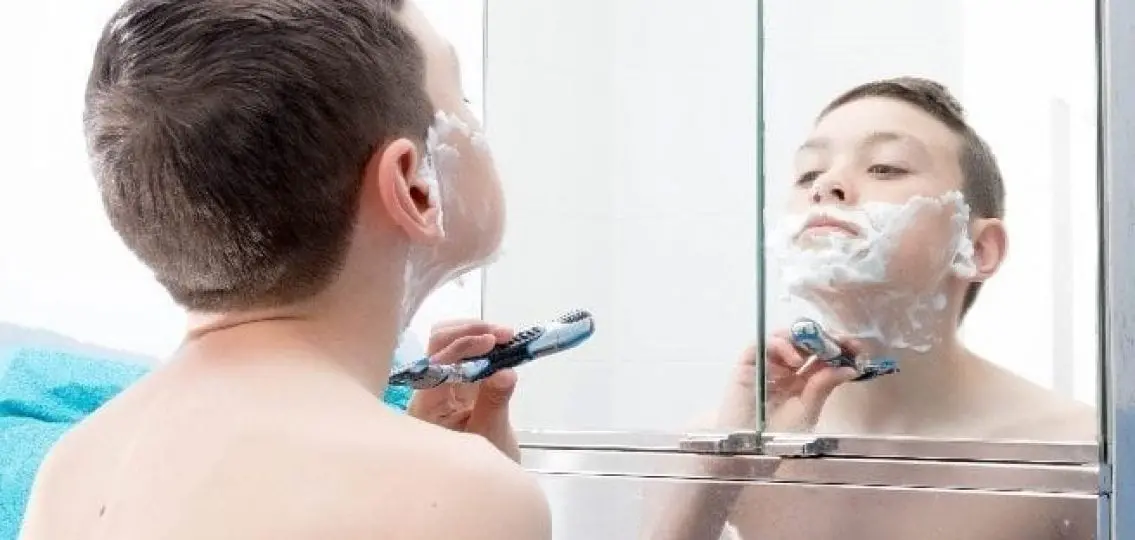Girls, Boys And Puberty
Like it or not, puberty means your teenager will begin to experience sexual feelings, desires and even concerns. In this series of four videos, Dr. Ellen Rome, head of the Center for Adolescent Medicine at the Cleveland Clinic, offers advice on how to talk about the many aspects of puberty and sexuality with our teenagers.

Video #1: The Penis
Transcript: On the topic of penises, we get a lot of questions from boys and from parents about size. And it turns out that, “it’s not the size of the wand, but the magic it waves,” as a med student shared with me back when in our med school days. But also, kids come in different sizes, and it’s very exceptionally rare to actually have a micro-penis on a kid. Really, they’re almost always the right size for that kid. And they’re almost always going to grow just as much as they need to when erect. So, if the kid is worried, have them talk to their doctor about it. And you can prep that doc before the visit. If you’re worried, ask the doctor privately to check it out.
I had one such kid where all of the brothers and uncles and male cousins were teasing the kid about are they too big. So, sure enough, did the exam, did the exam without the parent in the room, and the kid proportionally was very, very well endowed. And so he got dressed, and followed me into the other exam room where the mother was. And how do you share that? It was normal, it just was generous. You just have to make sure you get that private time with a parent to cycle back that information. But also reassure the kid that normal comes in all sorts of shapes and sizes, and it’s not a problem. Kids worry sometimes too much, kids worry sometimes about too little.
Video #2: Wet Dreams
Transcript: If your child gets wet dreams, that’s another aspect of the heathy sexuality that happens in some kids, but not all kids. Both ends are normal. It’s okay to have them, it’s okay not to have them. If you as a parent noticed, it’s fair game to say, “Hey, I noticed that the plumbing works. You’re having wet dreams. That means your guy parts are all fully functional. If you notice that, just put it in your laundry pile, I’ll get to it eventually. Or we’ll get you, you and your laundry, whatever the schedule is.”
If you can’t tell if it’s wet dream versus incontinence, what we call wetting the bed…The wetting the bed is going to be in a different spot, and it’s going to be more of it. The wet dream is going to be a sticky white spot area of ejaculate, right front and center in their pajamas kind of where their penis would by lying. So, you can kind of predict by where the wet is, and what the pattern is, whether that was ejaculate or urine. The kids might not know the difference. So educate them, saying, “Hey, wet dreams, those are normal.” If you’re having a problem with bed wetting, we can talk to your pediatrician about that.
Video #3: When “The Talk” is Too Difficult
Transcript: Some parents will never reach the comfort level of being able to have all these conversations with their kids. Then, prep the pediatrician. Say, “Can you make sure you talk to them about wet dreams, and erections, and all of the things that I’m having a hard time talking about at home? Or, have a conversation where you can teach me, live time, how to have that conversation with him.” Some people ask if it ought to be the dad or the mom who that that conversation. It doesn’t matter. It’s equally embarrassing for the kid, and potentially the parent no matter which gender the parent. It’s whoever tends to have those conversations more readily, or wants to stretch their parenting skills to start that conversation, or whoever gets into the pediatrician’s office.
If your pediatrician doesn’t do a lot of talking about what’s normal, and prevention, and healthy messaging, then it’s fair game to: one, ask the pediatrician for the info. Say, “Can we have a discussion about that?” Two, if the pediatrician really is out of their wheel house on that, then that’s why God invented adolescent medicine docs. You can find us all over the country, and all over the world. We are here exactly to help answer those troubled questions.
Video #4: Masturbation and Erections
Transcript: Parents and docs ought to be layering the information about what is a healthy sexuality from birth through adulthood. Just like you teach math different ways to a two year old, to a five year old, to a ten year old, to a twenty year old. We want to make sure that things like the m-word, masturbation, are not dirty words. Nor is it a four letter word, it’s way too long a word. We want both boys and girls to know that that’s a safe, and healthy part of sexuality, and not an evil or bad thing. But, that private parts are private.
Masturbation is something that shouldn’t happen in public. It should happen when you are in your shower or bed or room, somewhere with privacy. And that your private parts should be treated with respect. You don’t want to do anything that’s causing pain, or causing discomfort or uncomfortable feelings.
Healthy sexuality also happens from birth through geriatric years. So it’s normal for little kids to have erections. It’s normal for five year olds to have erections. It’s normal for ten year old kids to have erections. And it’s also normal for teenagers not to have erections. So if they’re not having them, it doesn’t necessarily mean that there’s a problem either. If they’re commenting provocatively about it, figure out if they’re commenting provocatively because they want to push your button, or is it because they’re worried about a problem, or because they’re showing off the new hardware. You want to figure out what’s going on with that.

So, for instance, if you have the kid who announces, as one kid did to his mother, “I can’t get out of the car, I have a boner!” You want to figure out, is that bragging or complaining? You can very matter-of-factly hand them a book or something else, a coat, and say, “Alright, carry this out over your waist for a second, and it’ll go away in a couple of minutes. Don’t worry about it.”




